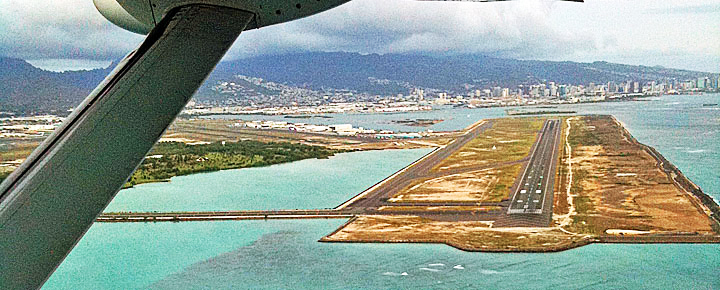The typically tranquil skies of Hawaii mirror a global concern recently highlighted by incidents reported by The Seattle Times. Following two serious engine failures on Southwest Airlines 737 MAX jets not in Hawaii, Boeing has issued a new alert to pilots about handling emergencies caused by bird strikes, including in Hawaii.
Just two months ago, we wrote about a Hawaii bird strike incident related to a Delta Airlines A321neo, which damaged the plane. That occurred as the aircraft had just landed at Lihue, Kauai, and was moving on the runway.
See: New Delta Plane Damaged At Kauai Amid Increased Hawaii Bird Strikes.
The two serious bird incidents that resulted in this broader situation and warning occurred last year. Southwest and United, the two airlines operating MAX aircraft to Hawaii, had previously advised their pilots. The current pilot manuals, however, don’t adequately document the related system designed to protect flights, according to various reports.
United said it conducted “a thorough review of training and existing procedural guidance for our pilots.” Southwest said it would update its flight manual.
“We haven’t been told a lot… We’re still kind of in limbo.”
Tom Nekoeui, VP of Southest pilots union responding to bird strikes.
These incidents reignite the conversation around aviation safety, particularly in bird-prone areas, including Hawaii.
A Closer Look at the Incidents The incidents most recently reported involved bird strikes that damaged the aircraft engines, leading to smoke infiltration inside the aircraft. These alarming events prompted Boeing to reinforce procedures for handling such potentially critical situations. This global issue directly impacts Hawaii, given the state’s significant bird populations and the recent uptick in bird strike incidents here.


The Local Impact in Hawaii In Hawaii, the recent bird strike on the Delta flight in Lihue, and more than 100 bird strikes in Hawaii last year, is a stark reminder of these real risks. That Delta plane sustained damage to its nose on the runway, echoing the severity of bird strike incidents. These occurrences hopefully spur authorities to revisit and intensify bird hazard management strategies.
Mitigation and Safety Strategies in Hawaii. Efforts include habitat management to reduce bird populations near airports and employing radar technology to monitor and manage bird movements. These are part of a broader, global initiative to implement best practices ensuring aircraft safety against such wildlife hazards.
Global Lessons for Local Implementation The incidents reported in today’s article are not isolated but part of a broader challenge that affects all aviation. Airlines operating in Hawaii focus on adopting best practices from local and global incidents to refine their safety protocols.
Community and environmental considerations, too. The conversation extends into the community and environmental and conservation spheres, where seeking a balance between effective wildlife management and protection is critical.
As Hawaii seeks to address its bird strike challenges, the lessons from each incident, both local and not, are invaluable in shaping strategies to enhance safety and efficiency in air travel further.
The renewed focus on bird strikes in aviation here in Hawaii and globally reflects the interconnectedness of aviation safety issues.
Get Breaking Hawaii Travel News







Feel lucky or fortunate that Honu’s can’t fly.
Maybe Hawaii is just for the birds.